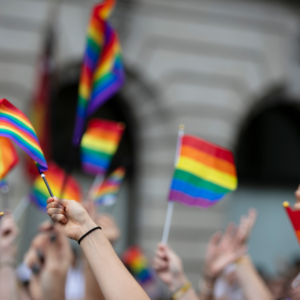
Pride is a global symbol of LGBTQ+ rights and celebration, has a rich and vibrant history that has unfolded over several decades.
We want to take a closer look at the history of Pride, with a specific focus on the United Kingdom’s journey towards equality, acceptance, and celebration of diverse sexual orientations and gender identities.
The early struggles
The roots of the Pride movement in the UK can be traced back to the early struggles for LGBTQ+ rights in the 20th century. In the 1950s and 1960s, homosexuality was criminalised, and LGBTQ+ individuals faced widespread discrimination and prejudice. However, brave activists and organisations began to emerge, challenging the status quo and advocating for change.
The Wolfenden Report
One significant milestone in the UK’s LGBTQ+ history was the publication of the Wolfenden Report in 1957. The report, led by Sir John Wolfenden, recommended the decriminalisation of homosexuality between consenting adults in private.
Although it took several years for this recommendation to become law, the report sparked important conversations and helped shift public opinion.
Stonewall and the Birth of Activism
The 1969 Stonewall riots in New York City had a profound impact on the LGBTQ+ movement worldwide, including the UK. Inspired by this pivotal moment, British activists began organising their own demonstrations and protests.
In 1970, the first UK gay pride rally took place in London, marking the beginning of a tradition that continues to this day.
Section 28 and the fight for equality
During the 1980s and 1990s, the LGBTQ+ community in the UK faced significant challenges. Section 28, introduced in 1988, prohibited local authorities from promoting homosexuality or teaching its acceptability in schools. This regressive legislation fuelled a renewed spirit of activism, as LGBTQ+ individuals and their allies fought for the repeal of Section 28 and broader rights and protections.
Landmark legal victories
Throughout the 2000s, the UK witnessed several landmark legal victories that advanced LGBTQ+ rights. In 2000, the age of consent was equalised, reducing the disparity between heterosexual and homosexual relationships. In 2004, civil partnerships were introduced, granting same-sex couples legal recognition and rights. Finally, in 2014, same-sex marriage became legal in England and Wales, followed by Scotland in 2014 and Northern Ireland in 2020.
Pride parades and celebrations
Pride parades have become the vibrant centrepiece of the Pride movement in the UK. Since its inception, London Pride has grown into one of the largest and most renowned Pride events globally.
Pride festivals are now held in cities across the UK, fostering a sense of unity, visibility, and celebration for LGBTQ+ individuals and their allies.
Continuing the fight for equality
While significant progress has been made, the fight for LGBTQ+ rights and equality is far from over. Transgender rights, tackling discrimination in healthcare and employment, and ensuring comprehensive sex education remain important issues that demand attention and action.
The UK’s history within the Pride movement is a testament to the resilience and determination of LGBTQ+ individuals and their allies. From the early struggles against discrimination to the triumphs of legal recognition and the vibrant Pride celebrations, the journey towards equality has been hard-fought and inspiring.
As we reflect on this history, let us recommit ourselves to the ongoing pursuit of justice and equality for all. The Pride movement has come a long way, but there is still work to be done. Together, we can build a society that embraces and celebrates diversity in all its forms.